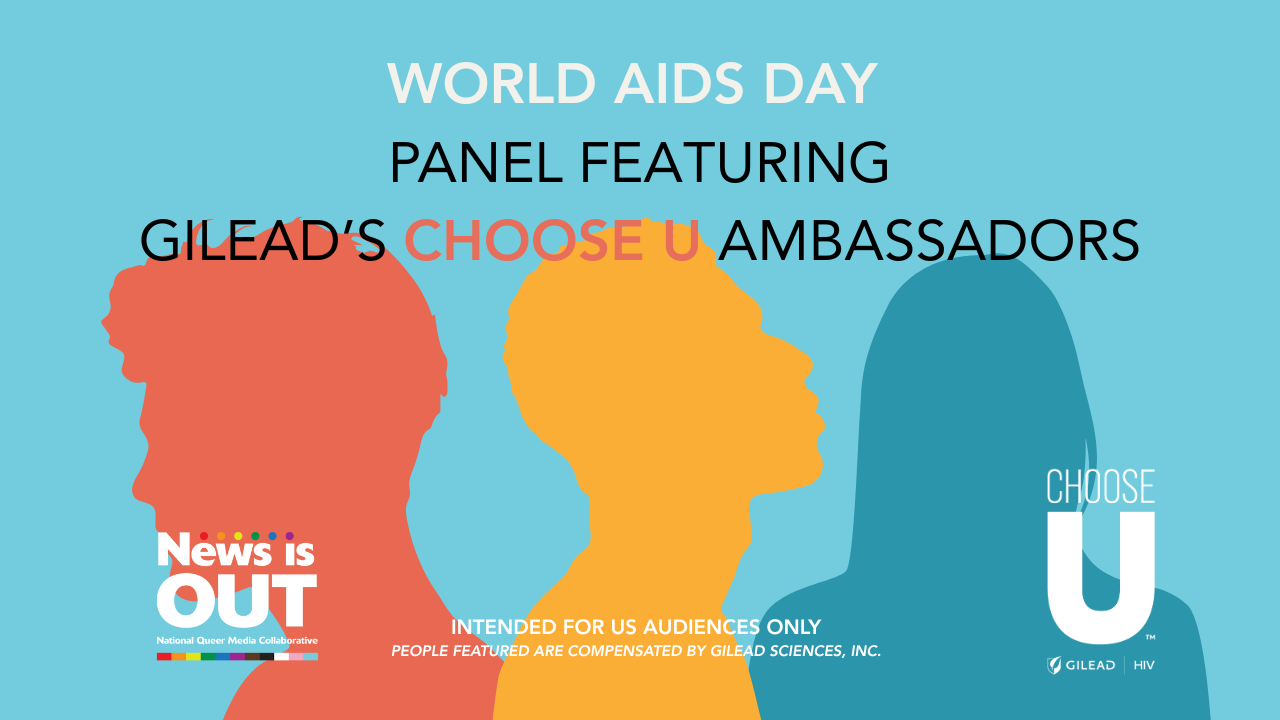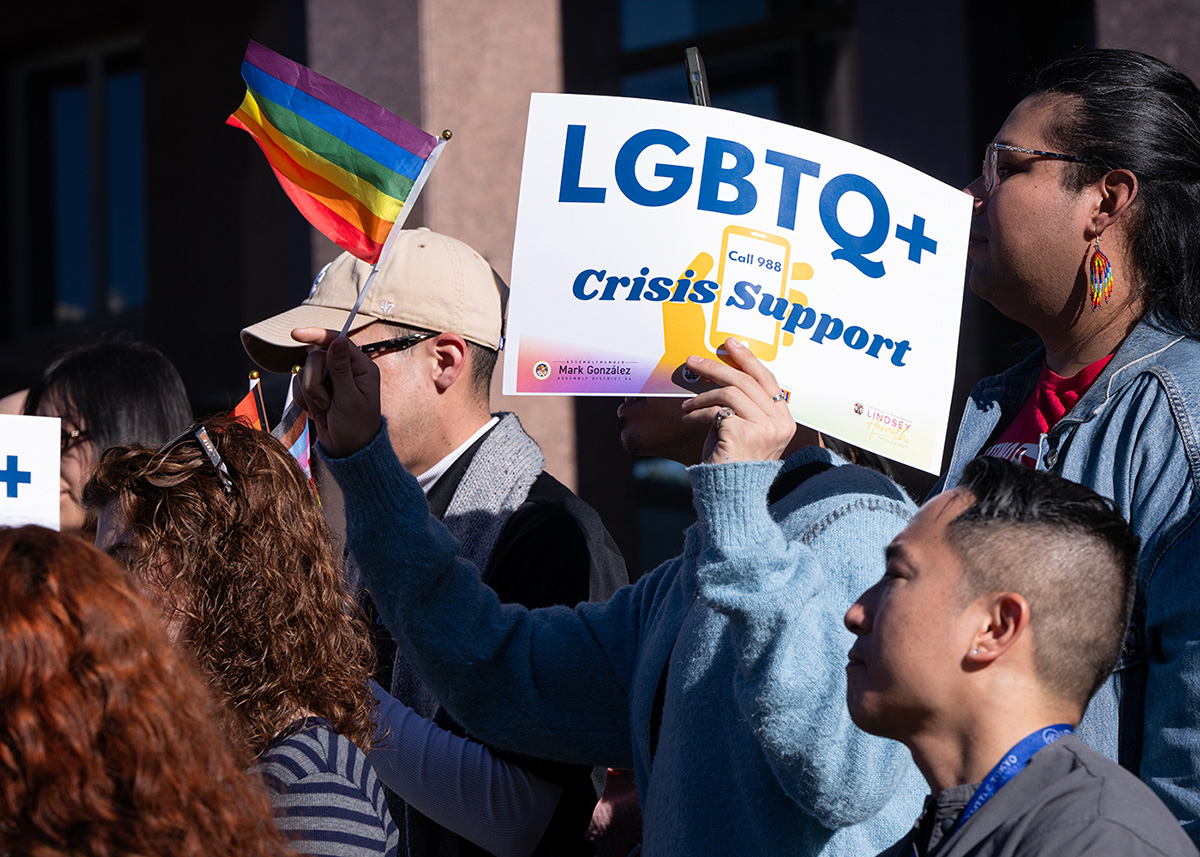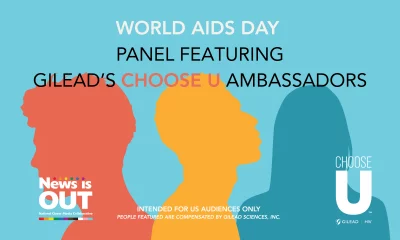Health
One-third of LGBTQ college students experienced housing disruption during pandemic
LGBTQ students were more than twice as likely to have lost student housing than non-LGBTQ students


LOS ANGELES – A new study from the Williams Institute at UCLA School of Law conducted in collaboration with the Point Foundation, the nation’s largest LGBTQ scholarship fund, finds that the COVID-19 pandemic has impacted the educational opportunities, financial security, and housing stability of many college students in the U.S., including an estimated 3.4 million LGBTQ students ages 18-40.
Using data from the Access to Higher Education Survey, a nationally representative sample of adults ages 18 to 40 conducted in January and February 2021, researchers examined the experiences of LGBTQ and non-LGBTQ students and those who planned to be students during the COVID-19 pandemic.
Results show that over a third (39%) of all students, and nearly two-thirds (65%) of transgender students, reported that their ability to pursue their studies was worse than before the pandemic. One-third (33%) of all students experienced a financial disruption, such as loss of financial aid, jobs, internships, or financial support from family, or needing to get a job.
“The economic fallout of the COVID-19 pandemic has disproportionally impacted people of color and LGBTQ people. It could have a long-term effect on the ability of marginalized populations to pursue higher education,” said study author Kathryn O’Neill, Policy Analyst at the Williams Institute.
In addition, LGBTQ students were more than twice as likely to have lost student housing than non-LGBTQ students (15% vs 6%, respectively). Nearly half of LGBTQ students who moved home during the pandemic were not out to their families about their sexual orientation or gender identity.
“Living with parents can be challenging for LGBTQ students who are not out to their family or whose families are not accepting of their sexual orientation or gender identity,” said Jorge Valencia, Point Foundation’s Executive Director and CEO. “When preparing policies to address future emergencies, colleges and universities should consider that LGBTQ students may not have a safe and supportive place to go.”
ADDITIONAL FINDINGS
Illness
- About one in five (20%) LGBTQ and non-LGBTQ students had a family member become seriously ill or hospitalized with COVID-19.
- Over a quarter (28%) of LGBTQ students of color and 23% of non-LGBTQ students of color reported that a family member had been seriously ill with COVID.
Ability to Pursue Studies
- 23% of all students experienced course disruptions due to the COVID-19 pandemic, including taking a leave of absence, changing schools, postponing starting school, or reducing the number of classes.
- More than one in ten (12%) LGBTQ and non-LGBTQ students have had to take care of children or other family members during this pandemic.
- 10% of LGBTQ students and 3% of non-LGBTQ students reported that they did not have reliable internet and a quiet space to complete online instruction.
- One in three (31%) transgender students did not have reliable internet, compared to 5% of cisgender students.
Housing Disruptions
- 31% of LGBTQ students experienced a housing disruption due to the pandemic compared to 17% of their non-LGBTQ counterparts.
- Before the pandemic, LGBTQ students were more than three times as likely to report choosing a school in a different city or state from where they grew up to get away from family as non-LGBTQ students (30% vs. 9%, respectively).
Financial Disruptions
- LGBTQ students were twice as likely as their non-LGBTQ counterparts to have lost financial aid (6% vs 3%, respectively).
- 14% of LGBTQ students reported losing an internship, fellowship, or job, compared to 6% of non-LGBTQ students.
Health
Choose U ambassadors share lived experiences with HIV, personal reflections, and insights

By Dana Piccoli
The Choose U World AIDS Day panel brought together three longtime advocates living with HIV to talk about care, stigma, and what living with HIV over the long-term means to them. The conversation featured Jahlove Serrano, Joyce Belton, and Andrew Nichols, who have each lived with HIV for more than 20 years. News is Out hosted the event in partnership with Gilead Sciences.
“Co-created with community representatives from around the world, Choose U is comprised of inspiring examples of how the outlook for aging with HIV has dramatically changed,” Gilead shared in the recent launch of the program. “By focusing on the real-world experiences of people in different circumstances, Choose U spotlights individuals prioritizing starting and staying on HIV treatment, self-care, and overall strategies to help them lead healthier lives.”
The Choose U ambassadors opened with a clear message: Lived experience drives understanding.
Each panelist talked through the decisions, relationships, and periods of uncertainty that shaped their HIV care. They also described their approaches to HIV treatment and adherence, including the importance of staying on treatment to help lower the risk of HIV drug resistance. They reflected on the shifts they have seen in HIV treatment over the decades, the value of honest conversations with providers, and how staying engaged in care and on HIV treatment helped them lead longer, healthier lives.
The panel discussed U=U, which stands for “Undetectable equals Untransmittable.” Undetectable means there is so little virus in the blood that a lab test can’t measure it. Research shows that taking HIV treatment as prescribed, and getting to and staying undetectable, prevents HIV from spreading through sex.
The panelists also spoke about the emotional side of living with HIV over the long-term and the stigma they have faced. Joyce described a personal moment when her pastor visited her in the hospital and how that experience began her work educating her church community about HIV.
Jahlove talked about how his biological family reacted to his diagnosis. “When I disclosed my status, they told me that I put a shame on the family,” said Jahlove. When he shared his status with his peers, they responded with support, which gave him a sense of empowerment.
Andrew, a professional therapist, described how he has experienced stigma in dating and in his workplace, and why he turns to therapy for guidance. “Therapy has really helped me rebuild my confidence and realize my self-worth has to come from me,” said Andrew. “Then after that, I can help with the greater community.”
The panel closed with a message for others living with HIV: They encouraged viewers to start and stay engaged in HIV treatment and care, ask questions, and rely on supportive networks. Their stories show how starting and staying on treatment over the long-term, community, and affirmation can shape well-being.
A recording of the full 30-minute event is now available on YouTube, which you can access here.
Commentary
Love in the time of porn: a glimpse into the dating life of an adult performer
Our very own writer and lead interviewer AJ Sloan (and retired pornstar/current content creator) dishes on his own dating life and some of the more delicate details of finding connection as an adult performer.

I was recently at a holiday party, one of those seasonally messy affairs where the conversations get bolder as the drinks get stronger and some folks inevitably decide that “boundaries” are negligible. After a few rounds of Jenga and drinks, someone leaned in and hit me with the all too familiar question I’ve been asked time and time again: “So… what’s it like doing porn?” Cue the predictable follow-ups: “Do you, like, actually enjoy it?” and, inevitably, the million-dollar question my publisher had just asked me to write about days earlier: “What’s your dating life like?” At least this time, the interrogation into my very public sex life gave me the perfect opener for this piece.
Dating has come a long way since the rom-coms of yesteryear. If You’ve Got Mail were made today, it would sound more like: “You’ve got 56 unread texts, 13 reels from that cute twink you met once in San Juan, 3 Zoom meetings, a stalker on TikTok, a case of social anxiety… and some mail.” Between notifications, memes, and a constant influx of digital attention, it’s getting harder to pause and breathe, let alone build a romantic connection with someone else.
And if managing modern dating wasn’t already complicated enough, try stacking the stigma of being an adult performer on top of that teetering Jenga tower. Despite an apparent cultural “sexual awakening,” stigma toward sex workers remains deeply ingrained in most layfolk today. According to a 2022 study from the University of Victoria, Challenges and Benefits of Disclosure of Sex Work, nearly 70% of sex workers reported negative judgment from potential romantic partners after disclosing their work, while only about a quarter said it deepened intimacy or understanding. For an industry that thrives on exposure, we still live in a society where transparency may cost you connections.
I can only speak from my own experience – yes, for those not yet aware, I’ve been an adult performer and content creator for (gasp) going on four years now – but dating while doing porn is both surprisingly normal while also proving to be… uniquely complicated. I’ve had my share of relationships (and situationships). The biggest difference is that my line of work acts as a filter. Being upfront about what I do weeds out many folks who, well, let’s just say, are not a right fit for me. It’s a built-in red-flag detector. And in this way, I appreciate its utility.
When someone responds with pearl-clutching or over-sexualizing, it tells me they’re not ready for the kind of honesty and communication that my lifestyle requires. On the flip side of the coin, the people who ask questions with curiosity instead of judgment are often the most emotionally literate people that I have the pleasure of meeting.
Still, it helps to know I’m not the only one navigating these dynamics. I reached out to my friend and fellow performer Cody Seiya, one of my earliest collaborators and someone whose kindness and authenticity I’ve always respected and connected with.
“My boyfriend and I met on Grindr,” Seiya shared. “What started as a mind-blowing hookup turned into a beautiful relationship that’s been going strong for three years.”
Seiya began content creation during the pandemic, right after college. “At first it was just a way to make ends meet,” he said, “but it became something much bigger – creatively, personally, even romantically.”
Seiya’s story is one of many that are testament to the fact that real relationships can and do exist and thrive within our industry. But he also reminded me of how visibility can sometimes complicate intimacy. “Sometimes people feel like they already know me because they’ve seen me online,” he said. “They forget there’s a person behind the content.”
That illusion Seiya describes – of being “known” through our content – is referred to as parasocial relationships. That is, the one-sided emotional connection people form with public figures or creators. It’s the same process that makes fans feel close to a favorite celebrity, only supercharged by sex.
Social psychologist Dr. Eva Illouz has written about this in her work on emotional capitalism – how intimacy becomes commodified in modern culture. When vulnerability is part of your job, boundaries tend to blur. For performers, those blurred lines don’t go away when the camera stops. They can sometimes spill into our dating lives, shaping how others perceive your availability, your emotions, even your worth. It’s a peculiar paradox, being both hyper-visible and invisible. People think they’re seeing us when in reality, they’re seeing one version of us, a version that is essentially a performance.
The University of Victoria study also found something surprisingly encouraging. Sex workers who disclosed their profession early in dating were more likely to report higher relationship satisfaction and emotional safety than those who kept it a secret. Honesty, it turns out, doesn’t just protect you from stigma. It helps attract partners who are capable of handling truth. For me, that early disclosure is important and natural. It has the tendency to pass the mic. By being open and transparent, I then allow others to reveal who they are in response to it. Dating as an adult performer teaches you a way of emotional efficiency. You gain the ability to read who’s projecting their own fantasy onto you versus who’s genuinely curious.
When you really look at the bigger picture, there is a running baseline of people sizing up other people. Everyone gets judged time and time again – whether it’s based on their job, their beliefs, their bank account, or their social media presence. At the end of the day, I guess it is up to the individual to decide for themselves as to what extent they will indulge in their arguably natural instinct to place people in boxes based on said criteria.
Authentic connection comes when folks think past their impulses and pay attention to the whole person in front of them, when they stop leading with their libido and actually engage with one another. That’s when true conversation can actually begin. And it is that particular flavor of open-mindedness, in my humble opinion, that is entirely swoon-worthy. Green flags across the board.
Commentary
The perfect storm: Our queer infrastructure is in crisis
Pride began in a bar. If we lose our bars, we lose the heartbeat of queer liberation.

Queer infrastructure across the United States is collapsing. Not nightlife, not “the scene.” Infrastructure — the physical, social, cultural, and economic backbone that queer people have relied on for decades when nothing else would protect us.
The neon markers that once meant safety, belonging, and defiance are going dark. Entire ecosystems — entertainment venues, social houses, drag stages, queer workplaces, dance floors, community hubs, and the micro-economies that keep people afloat — are disappearing. What we’re losing isn’t a place to drink. We’re losing the architecture that has held our community together for generations.
And this isn’t guesswork. Between 2007 and 2019, the U.S. lost roughly 36–40% of its gay-bar listings, and more than half of lesbian-bar listings vanished. Even by 2021, the number of queer-focused venues recorded in national bar guides was about 40% below what it had been a decade earlier. The exact numbers vary, but the direction is clear. Our physical infrastructure is shrinking.
I’ve worked inside queer venues for twenty years. Long enough to know this isn’t a downturn; it’s a structural collapse. One venue closing — including my own struggles — isn’t the story. It’s one pressure point inside a much bigger storm.
Front 1: Economic Neglect
Queer-owned spaces have been hit by the same economic pressures crushing small businesses everywhere — rising rents, higher insurance costs, staffing shortages, and the general squeeze on independent operators. But unlike other industries, queer venues don’t have access to the same support structures, grant pathways, or advocacy groups that help businesses stay afloat.
At the same time, most funders genuinely believe they’re already “supporting the community” through Pride sponsorships, corporate floats, and seasonal visibility campaigns. That’s not malice — it’s simply where the cultural script has pointed them. Visibility has been positioned as the primary form of allyship, while the brick-and-mortar venues that keep queer people connected all year receive none of that investment. And because there’s no national body tracking queer-venue health or publishing financial data, the crisis stays invisible, even as other cultural sectors access emergency funds that don’t exist for us.
We didn’t lose relevance; we lost reinvestment. Visibility alone can’t sustain infrastructure.
Front 2: Cultural Complacency
And I’m not pretending I’m innocent. I’ve created Pride-weekend events that pulled crowds away from physical venues. Most people who’ve worked in this world have. That’s the point — Pride has turned into a gold rush instead of a homecoming. When a system rewards spectacle instead of stability, it will eventually burn through its foundations.
And maybe we’re all a bit rainbow-flagged out. When everything is rainbow, nothing feels radical. Visibility becomes décor, and the meaning behind it quietly erodes.
Front 3: Post-Pandemic Behavior
COVID didn’t just shut venues down. It reprogrammed how queer people socialize. This generation treats alcohol the way we treat nicotine — occasionally and with a little guilt. One drink is fine. Getting drunk feels dated. It’s tough to sustain community spaces when the culture itself has shifted from swigs to sips.
Front 4: Digital Diversion
Apps absorbed the social currency that used to flow through physical queer spaces. Flirtation, validation, hookup energy, and emotional connection — all of it can now happen behind a paywall or a profile.
And festivals? They’re not the enemy. Many are stunning, creative, and run by queer visionaries. But they’re experiences — not infrastructure. A three-day utopia every few months won’t replace the weekly rhythm of a real-world community. Festivals build memories. Venues build continuity.
Front 5: Generational Loss
The AIDS crisis didn’t just take lives. It wiped out a generation of queer operators, business owners, mentors, and organizers. The people who should have passed down knowledge never got the chance. Today’s surviving owners have no one lined up to inherit their roles. That wasn’t only a human loss — it was an infrastructural one.
Front 6: The Disappearing Ecosystem
During a recent trip to Florida, I toured a drag venue from the front door to the kitchen. Security, performers, bar staff, cooks — everyone moved with pride in what they did. It was a full ecosystem. A living, breathing workplace with its own culture and heartbeat.
When venues close, we don’t just lose “a bar.” We lose entire micro-economies. We lose livelihoods. We lose little worlds that have been built with love and skill. These aren’t side gigs. They’re careers.
Front 7: Cultural Invisibility
Promoters, DJs, drag artists, producers, and operators rarely get treated as cultural workers — even though their work shapes culture every weekend. Each night is its own creation: sound, mood, lighting, atmosphere, safety, release. But the people behind it all stay invisible, as if community magically appears when someone hits play.
Queer nightlife influenced mainstream culture long before influencers realized clubs were a backdrop.
Front 8: Community Accountability
And I’ll say this softly: it wouldn’t hurt if a few of the RuPaul girls — who can earn in one weekend what small venues make in a month — stopped by the places that raised them. Not charity — just presence. A drink. A photo. A wave. For small entertainment venues and social houses, that kind of drop-in can literally keep the lights on.
We all have a role in supporting the infrastructure that once supported us.
Front 9: A Language Problem
Words matter. “Nightclub” doesn’t describe the modern queer venue. These places host weddings, fundraisers, drag shows, community meetings, film shoots, health drives — they’re entertainment venues. And a “bar” isn’t just a bar. It’s a social house. You don’t need a drink to belong. You go for community, safety, and a familiar face. Language shapes perception, and perception shapes investment. You can’t save an infrastructure that people miscategorize from the start.
Front 10: Political Weather Shift
Political weather can change fast. If hostility rises — and in some places it already has — queer infrastructure becomes survival infrastructure again. These spaces turn instantly back into what they’ve always been: lifelines. They are not indulgences. They are refugees. And if we forget that, we risk having nowhere left to stand when the next storm hits.
It’s not nostalgia — it’s infrastructure.
Queer venues are civic assets.
If we lose them, we lose safety nets, jobs, and history.
This is not mourning the party; this is protecting the culture.
If you love queer culture, show up for the places that still hold the door open. Ask where your money goes. Support the rooms that give you music, connection, safety, and the chance to meet someone who changes your life.
Pride began in a bar. If we lose our bars, we lose the heartbeat of queer liberation.
Luke Nero has dominated the nightclub scene on both the East and West coasts with tentpole events that include Mr. Black, Rasputin, and Evita. He is the CEO and founder of Strut Nightclub in Costa Mesa, California, one of the only queer clubs in Orange County.
LGBTQ+ Youth Mental Health
L.A. County officials advocate to reinstate “Press 3” crisis hotline for young queer people
After the administration ended the national 988 Suicide & Crisis Lifeline’s specialized youth line this July, officials are motioning for a localized option in Los Angeles.

Queer youth are in danger. As the administration continues to target initiatives and programs supporting the health and safety of LGBTQ+ community members, this year saw the end of a number of critical resources, including that of the “Press 3 option” in the national 988 Suicide and Crisis Lifeline. Previously, pressing “3” after calling the 988 Lifeline would direct young queer people to a specialized line where they could reach counselors trained to support them.
For the last three years, the federal government contracted various LGBTQ+ organizations like the suicide prevention nonprofit The Trevor Project to field calls from young queer people calling the 988 Lifeline and direct them to specialized LGBTQ+ youth counseling services. In July, the administration ended these contracts — removing the “Press 3” option altogether. While young queer people can still access the general crisis line, this option allowed them a more tailored avenue to seek help, support, and resources.
The severing of this line comes at a time when rising concern over the mental health of young queer people is growing exponentially. The Trevor Project found in its 2024 national survey, which included more than 18,000 young queer people ages 13 to 24, that 39% of those surveyed seriously considered attempting suicide in the last year. This included 46% of its trans and nonbinary participants.
In the organization’s latest long-term study on the mental health experiences of LGBTQ+ young people, suicidal ideation amongst LGBTQ+ youth rose from 41% to 47% from 2023 to 2025.
As community leaders and advocates struggle to create solutions, L.A. County Supervisors Lindsey Horvath and Janice Hahn, as well as Assemblymember Mark González, are working to restore “Press 3” services. On Tuesday, the three local officials announced a series of motions and legislation they’re working on to create localized and statewide solutions that support young queer community members.
“Before this reckless cut, 1.5 million contacts were made to Press 3,” said González. “That doesn’t happen by accident — that happens because LGBTQ+ youth trust this lifeline and rely on it in their darkest moments.” González plans to submit a bill in the upcoming legislative cycle that, if approved, will fund and reinstate a statewide subnetwork that will support young queer Californians seeking help from the 988 Lifeline. The last day for bills to be introduced is Feb. 20th.
This bill joins national legislative efforts to restore the specialized queer youth service line. Senate Bill 2826 and House Bill 5434 were introduced in September and are labeled the “988 LGBTQ+ Youth Access Act of 2025.” They aim to codify “Press 3” into law and ask for sufficient funds to be directed to reinstating and operating the specialized service for young queer people.
Additionally, Supervisors Horvath and Hahn have authored a motion that supports González’s proposed bill and also encourages the county to move forward with a localized version of the “Press 3” option. This would require the County to contract crisis intervention service providers who would be able to provide counseling to young queer people using the “Press 3” option.
The motion also includes a plan that directs the Department of Mental Health to develop a proposal for a “Press 3” pilot program in L.A. County, which includes identifying contracted service providers, creating a budget and finding funding sources, as well as developing a timeline for the program’s implementation.
“Young people in our community face disproportionate challenges; taking away this critical resource is unacceptable,” said Supervisor Horvath. “We must restore this lifesaving support and make clear that every young person deserves to be heard, supported, and safe.”
Kristie Song is a California Local News Fellow placed with the Los Angeles Blade. The California Local News Fellowship is a state-funded initiative to support and strengthen local news reporting. Learn more about it at fellowships.journalism.berkeley.edu/cafellows.
Commentary
Spoken solidarity: The linguistic tactics of queer communities in the Middle East
A glimpse into how queer communities – from mid-century Britain to today’s Middle East – utilize coded languages and methods of communication as devices of resistance and survival.

For any person, queer or otherwise, who has ever shrieked “slay” over mimosas at brunch or whispered “trade” to their gym buddy in reference to the beef cake in mid-squat, reading this article is now your homework. Class is in session, the library is open, and the seats are plentiful. Take one.
Long before “yasss queen” spread through TikTok like the clap through WeHo and Bravo was infused with a mouthful of “shade”, queer folks were already creating their own coded ways of communicating on the DL – entire secret languages laced with wit while fueling solidarity – created not for entertainment but for survival. From mid-century Europe’s Polari to the thriving queer slang of today’s Middle East and then some, these tongues act as both armor and art. They are a testament to the fact that when society tries to police who we are, we always find a way to clap back.
In mid-20th-century Britain, one of these argots – and arguably the most widely known – was Polari. Polari was spoken by gay men, theatre folk, and sailors due to homosexuality being deemed criminal. So many of the words birthed by Polari have made it into modern-day queer vernacular (camp, butch, drag, trade). But Polari did so much more than fluff our collectively queer vernacular. It protected LGBTQI+ folks who could be convicted, shamed, or shunned simply for living as their authentic selves. It gave way to coded communication – a wink, a nod, a clever use of wordplay – at a time when discretion meant life or death.
Today in the Middle East, queer communities continue to speak in code out of necessity, yes, but also as a form of resilience. In many states where homosexuality is still criminalised – especially in regions experiencing conflict – the risk that visibility imposes is too dangerous. When displacement, sectarian violence, and authoritarian crackdowns converge, words result in wounds. So, language transforms. It adapts to hiding in plain sight -in a glance, a sly play of words, a borrowed metaphor that says “I see you” to those who are actually listening, those who need to hear it – while going unnoticed by those who aren’t and don’t.
In the din of places like Lebanon, Iraq, the Gulf States, or even refugee camps around Syria and Gaza, queer people face double – if not triple-layered dangers: authoritarian laws, war, and displacement. Under these types of conditions, conventional speech can be a luxury if not a liability. It is in these instances that the queer and gender-diverse communities turn to tongues that whisper under the radar.
In the Gulf, the term ṣaf‘ūn (صَفْعون) is used by gay men to mean someone attractive, originally referring to court “slapped ones” in the Abbasid era. In Iraq, the term mustarjil(a) (مُسْتَرْجِل/مُسْتَرْجِلة) refers to a woman who presents as masculine – a term brimming with stigma but repurposed sometimes among gender-nonconforming people. In other areas, from Morocco to Tunisia, comes shawwāya (شَواية) meaning “grill-rack” used for a sexually versatile gay man. This term, like many others, is playfully encrypted for the queer ear.
In the queer underground of the Arab world, these avenues of coded communication work as a unifying force that fosters solidarity in the community. The recently published bilingual book The Queer Arab Glossary, composed by Lebanese-based designer and activist Marwan Kaabour, collected and comprised over 300 such terms across dialects – including Gulf, Iraqi, Maghrebi, and Levantine. One queer Iraqi contributor recalls how, at times of displacement, the ability to exchange a word like “Boyāt” (Boy-āt in Gulf dialect for masculine-presenting woman) quietly in a conversation on or offline becomes a lifeline for many. In Lebanon’s post-conflict environment, a study found queer refugees had to depend on coded slang and private networks because open affiliation carried the far too real threat of state-orchestrated scapegoating.
These communications don’t just exist in the hush-hush corners of bars and dressing rooms. Today’s queer-coded languages of the Middle East and beyond thrive in the all too familiar glow of mobile screens. Digital spaces haven’t just given these cryptolects new life – they’ve mutated them into something faster, slicker, and far more algorithm-resistant. Because whether it’s the state, the platform, or the algorithm that’s surveilling, our methods of communication had best be incognito.
Of course, there’s no single “queer dialect” of the Middle East. Much like the region itself, queer-coded speech is wildly diverse, shaped by geography, humor, trauma, and the delicious specificity of whichever local culture is utilizing it. In Lebanon, queer slang revels in camp – one part Beiruti French, one part diva-worship (and then some).
In Iraq, terms carry the weight of sectarian histories. Words like mustarjil(a) are steeped in stigma but sometimes reclaimed as sly, irrepressible badges of identity. In Egypt, queer slang leans toward comedic exaggeration – melodramatic metaphors and references to TV stars that only the gayest of the gay can catch. In the Gulf, the codes often draw from classical Arabic, giving them an almost poetic quality. These differences aren’t arbitrary cultural signifiers. They are proof that queer life in the region is neither monolithic nor imported. They are as local and organic as they come.
Modern queer slang in the Middle East wasn’t born yesterday. These colloquial collections are descendants of older linguistic traditions that were queer-coded long before the word “queer” even existed. Take pre-modern Arabic poetry. So much of it is dripping with homoerotism that, if it were published today, it would make a nun blush and a priest, well, blush somewhere else. Poets of the Abbasid era wrote about beardless boys with gazelle eyes in verses that are still memorized in schools (albeit with the homoeroticism politely tiptoed around). Sufi poetry wove divine love and earthly desire into metaphors so gender-fluid that academics still argue about who the “beloved” actually referred to.
Ottoman culture wasn’t shy either. Male beauty tropes were celebrated widely and openly, and love poems addressed to young, pretty dudes circulated far and wide. And across the region, what historians now refer to as “shadow cultures” preserved pockets of man-on-man love and longing in storytelling, ritual, performance, and social customs.
At its essence, queer-coded languages tell us not only how communities communicate, but who they are. They reveal a sense of humor sharpened under pressure, jokes that double as shields. They reveal gender fluidity that far predates Western gender discourse, woven into wordplay and performance. They reveal something that the headlines so often miss – that queer life in the Middle East is not solely defined by suffering and sacrifice. It is defined by creativity, stubborn joy, and an innate understanding that community is built as much through laughter as through shared struggle.
Queer dialects, cryptolects, and coded talk across the region are living proof that language can be an archive of resistance, ingenuity, desire, and identity. Even when the world insists on silence, queer folks in Beirut, Baghdad, Basra, Tehran, Istanbul, Cairo, the Gulf, and beyond continue to speak. Not always loudly. Often in code. Always with intention.
The colloquial terms I mentioned earlier – camp, butch, drag, trade – may originate with Polari, but they didn’t evaporate with the change of times. They survived and integrated into queer vernacular. What this shows us is that coded speech is not simply a relic of oppression but something enduring. And just like Polari, these languages remind us that when society tries to snuff us out, we don’t disappear. We evolve. In the Middle East today, in societies torn by war, authoritarian collapse, or enforced silence, coded queer speech thrives just as hard as those using it. These words may hide in plain sight, exist in the hush-hush of chat groups, or circulate in graffiti and art collectives. But their purpose remains profound – they say we exist. Even when the society around you might deny it, target it or try their damnedest to erase it. We exist.
Commentary
Bubba Trump: the Prez and the infamous files
Comedian Allison Reese gives her thoughts on the news of the day

“Ask him if Putin has the photos of Trump blowing Bubba.” Much like the aforementioned “Bubba,” I am blown away. A different kind of blown, but blown nonetheless! Last week, leaked emails from child-sex trafficker and President Trump’s ex-bestie, Jeffrey Epstein, have been all over the internet. This email between Jeffrey and his brother, Mark, in particular, has been everywhere due to the email being fellatiocious1 in nature—
Fellatiocious1 [Fel-ay-she-oh-sh-es] Adjective — For the use of describing getting head.
It’s also gone viral because “Bubba” is a known nickname of former President Bill Clinton, husband of Trump’s foe and political opponent, Hillary Clinton. While it is huge news, I am not blown away by this being about Trump giving head to the former head of state, and known slut (derogatory), Bill Clinton. Although it is funny as hell.
I want to take a moment to urge us all as Americans to remember that Republicans are gay. They are as gay as my Home Depot-orange overalls from WildFang that have a lesbian custom-crafted Chappell Roan HitClip attached to them via carabiner. Republicans are usually the only kind of gay that it is a sin to be: shame-filled day-walkers who pretend to be straight “Christian” men who cause real harm to queer communities with their lies and their rightwing policies and ideologies. I call them day-walkers because they walk around in the daylight with their tradwives, their hell-gripped privilege, and “traditions,” then they traipse around at night in their true form looking for secret dick they wish to punish in the daytime. That and because I am pretty sure they suck blood — no homo! So yeah, IMO Republicans are HOMO. They are the only political party causing seismic events at Grindr every time they come to town. Piece it together: Trump doing gay shit? One of the more Republican things he has done.
But what I am most blown by is how we bypassed the first part of that email that asserts that Putin had blackmail on a sitting president. “Ask him if Putin has the photos of Trump blowing Bubba.” This is about the very same adversary that a bipartisan Senate concluded had interfered with the 2016 presidential election in an effort to help Donald Trump win. Crazy how we can read that entire 11-word sentence. 11! Angel numbers! Make a wish! — and not first and foremost realize that the story there is not the GAYllatio2
GAYllatio2 [Gay-Lay-She-Oh!] [Sounds like RUFIO but gay] Verb — The act of receiving gay head onto a penis part.
On the flip side, kinda crazy that Trump being kinda gay would mend the political divide in America and get people to pay attention. It’s the wrong kind of attention, but it’s somewhat in the right direction. Maybe we just ALWAYS have to couch an important piece of news with some fuck-ass salacious crap for the American public to finally pay attention. Do I have to tell you that Trump and the Saudi crown prince were sitting on the very couch that JD had fucked when they dismissed the brutal killing of an American journalist, Jamal Khashoggi? Maybe if Trump posted hole on the main, then people would start to notice that we are in late-stage capitalism! Or maybe the Dems need to figure out how to make a TikTok about “6-7” for the American people to finally see that the president and his administration are liars, ghouls, and rapists. At this point, I am down for whatever it takes to get people to see that he has only ever been for himself and sick billionaire friends.
But is a win, a win? Is getting Trump to look gay to his conservative base (societal bottoms) (derogatory) the only way to get them to see that he has been a huge gross liar this whole time? Are the American people only going to care if they find out that there are boys and men also abused in the files? All I can do is continue to stay active in supporting my communities, continue to be active in politics, and pray for the victims regardless of gender, regardless of race, regardless of whether or not they support Marjorie Taylor Meane1
Marjorie Taylor Meane1 noun; bitch — The nickname Trump shoulda gave given her. But he is stupid, and his brain doesn’t work. Besides, the gays deserve the nickname more.
In the name of the father, the son, the tia, Tamara, (sincere) Amen.
COMMENTARY
Dating during the holidays: Why cuffing season hits GBTQ men so hard
For GBTQ men, the holidays can be one of the loneliest times of the year. Seasonal depression ramps up, it gets darker earlier, it’s colder, and suddenly everyone around you seems to be coupling up

The holidays do something to us.
They pull at our hearts, our memories, our wounds, and our longing, all at the same time. And honestly? Dating during this season can feel like an emotional obstacle course.
For GBTQ men, the holidays can be one of the loneliest times of the year. Seasonal depression ramps up, it gets darker earlier, it’s colder, and suddenly everyone around you seems to be coupling up. It’s like the whole world collectively decided to jump into a cuddle puddle and forgot to send you the invitation.
And that’s why “cuffing season” is a real thing.
People want warmth. They want touch. They want a body next to them under the blankets while the rest of the world posts family photos with matching pajamas.
We want connection.
We want closeness.
We want someone to come home to when everything feels cold.
But here’s the deeper truth — especially for queer people: A lot of us didn’t grow up with magical holiday memories.
Many of us were rejected, or disowned, or made to feel “different,” and the holidays can bring all that trauma back like it’s happening in real time. While other families were singing carols, some of us were hiding in our rooms, praying no one would notice how “different” we were.
So now, as adults, having a partner during the holidays can feel like having a chosen family.
It feels safe.
It feels comforting.
It feels like someone finally picked you.
And there’s nothing wrong with wanting that. We all deserve love. We all deserve someone who makes us feel held.
But…
(you know there’s always a “but”)
We also have to ask ourselves:
Is this connection real? Or is it holiday loneliness wrapped in mistletoe?
Are we craving a partner, or are we craving comfort?
Does our heart need love? Or does it just need some warmth and self-compassion?
Because cuffing season relationships can be beautiful, but they can also be Band-Aids. Temporary. Convenient. Easy.
The real question is:
Do you want a partner for the holidays… or a partner for your life?
And if you’re single right now, as a matchmaker, I want to share something important:
You’re not behind.
You’re not failing.
You’re not missing some magical holiday checklist.
Being single during the holidays is not a punishment, even though it can feel like it when you’re sitting on your mom’s couch watching your siblings and cousins live out their Hallmark movie fantasy. Their husbands, their wives, their perfect kids, everyone in matching sweaters — and you’re like, “Cool, I’ll just be over here in the corner petting the dog.”
But disappearing into the extra bedroom and crying into a pillow isn’t your only option.
(Though if you need a five-minute cry, listen… you’re human.)
As a private matchmaker, here’s what I tell my clients — and myself! — every year:
1. You don’t need a partner to belong.
Chosen family is real. Friends are real. Community is real.
Sometimes your holiday joy comes from the people you choose, not the people you were born into.
2. You are allowed to create your own traditions.
A queer Christmas.
A gay Friendsgiving.
A holiday dinner with your spiritual family, your gym friends, your brunch crew, your book club.
Your joy isn’t limited to the house you grew up in.
3. Self-love is not a consolation prize.
It’s the thing that makes every relationship — including your future one — healthier.
4. The holidays aren’t a deadline.
Just because the world feels coupled doesn’t mean you have to rush into something just to survive December.
As a matchmaker, I see the other side too. And here’s what I want you to remember:
A lot of people do find love during cuffing season — real love, lasting love, beautiful love.
Because when loneliness rises, so does honesty. People open up more in the winter. They’re more vulnerable and willing to take a leap.
But whether you’re dating, single, complicated, or “it’s a long story,” know this:
You are not alone.
You are not behind.
And the holidays don’t define your worth.
If you end up in a relationship this season — amazing.
If you don’t — you still belong, you are still loved, and your story is still unfolding exactly how it’s supposed to.
And who knows…
Maybe next December, you’ll be the one cuddling up with someone who feels like home.
But for now?
Give yourself grace.
Give yourself compassion.
And give yourself permission to experience the holidays in the way that feels right for you.
You’re not broken.
You’re not missing anything.
You are enough today, this month, this season, all of it.
Daniel Cooley, LGBTQ+ Matchmaker & Co-owner of Best Man Matchmaking – California’s premier service for queer and trans men seeking emotional connections. Learn more here.
Join us at our Gay Singles Night on Thursday, December 3rd, at the Geffen Playhouse with LA Blade’s Matchmaker Daniel Cooley for an unforgettable evening! This evening includes a post-show talkback. Use code: LAB49T17 for $49 (includes per ticket fee) for Premium, Section A, or Section B seating. No ticket limit. No refunds or ticket exchanges. Visit geffenplayhouse.org to purchase your tickets. Code also valid for performances Dec.4-7, including weekend matinees.

Commentary
The cost of competing: Olympic hopeful faces suspension for making ends meet with OnlyFans
Olympic hopeful Kurts Adams Rozentals, accomplished paddler earning a mere £16,000 a year in funding, turned to OnlyFans to make ends meet, only to be suspended and risk losing his Olympic dream for trying to stay financially sound

Another day, another athlete whose career is in jeopardy due to their OnlyFans side hustle. Meet 22-year-old paddler Kurts Adams Rozentals. He began posting what he refers to as “edgy videos” on OnlyFans back in January in order to afford training and living expenses. Now he’s being suspended by Paddle UK and faces being removed from the pathway to the Olympics – forced to choose between his athletic dream and the income stream.
On paper, Rozentals was living the Olympic-bound dream. He won silver in C1 at the Under-23 World Championships in 2023. He was placed on the UK’s elite “World Class Programme,” funded by lottery grants via Paddle UK and UK Sport. But the grant? £16,000 a year. That’s laughably low when trying to get by, let alone in a city like London.
In a recent interview with professional speedskater Conor McDermott-Mostowy, he shared some similar insight into the struggle of funding for thriving athletes:
“The reality is that Olympic sports are not accessible or sustainable for most people… Many world-class and Olympic-calibre athletes earn less than minimum wage while dedicating more than full-time hours to their sport.” LA Blade
In other words, even if you’re punching above your weight in terms of results and on the “right” program, the financial foundation is still precarious at best.
So, Rozentals chose to create adult content, start an OnlyFans account, earn six-figures (werq), and ease both his financial burden and his mind. He stated, “It was the first time in my life I saw real progress in my financial situation. It was the first time I was able to fund the training myself… the first time I was able to get my mum something nice after her sacrificing everything … And it came from crazy videos like the one that got me banned.” Hell, if that isn’t uncomfortably relatable: you feel stuck, ignored, underpaid, desperate – and you get proactive in creating a solution.
Enter the moral panic. In April, Paddle UK suspended Rozentals from the program, removing him from the team pathway, pending investigation. They cited “offensive use of social media”, “indecent, offensive, or immoral behavior”. The media narrative? “Olympic hopeful banned after filming sex act for OnlyFans during flight.” Points for creativity, Kurts.
To put it bluntly, this is less about some video on a plane (yes, it may have been pretty wild, yes, it may have breached social-media rules) and more about 1) how we undervalue our athletes; 2) how we penalize sex work and adult-content creators who dare to dual-exist; and 3) how hypocritical the entire situation is.
The rules state: “Don’t bring the sport into serious disrepute.” But what about a sport that actively refuses to pay its athletes enough to live on and forces them into side-hustles? Many sports stars have OnlyFans or alternative platforms now, so why single out Rozentals?
This is no isolated incident – Rozentals is not alone in those whose professional life has been placed in jeopardy – or destroyed – due to their involvement in adult entertainment. In one stark example, Erick Adame, a weatherman in New York City, lost his job after videos of him participating in adult webcam streams anonymously surfaced and were sent to his employer. Despite the fact that the activity was consensual, the leak triggered his suspension and eventual termination. Adame later acknowledged the consequences, but also refused to apologize for being openly gay and sex-positive. Adame’s case is a testament to how adult-content involvement, even if legal and consensual, can result in devastating professional repercussions when employers decide it clashes with their brand.
The stigma that looms over adult content and entertainers is palpable. “You’re unclean. You’re not respectable. You’re unacceptable.” But I’ll bet my bottom dollar that more than one decision-maker at Paddle UK has paid for (and fapped to) OnlyFans – if not Rozentals then someone else’s. Yes, I said it. The people policing the “shame” are more than likely themselves to be patrons of the same industry that they oh-so self-righteously look down upon. Boom.
For Rozentals, this was about survival. Not everyone is born into parental wealth or has a sponsor stacking checks to pave the way for full-time training. Make no mistake – if he’d been born with a rich daddy or trust fund, this wouldn’t be happening. The system is set up for those with means, not those with grit. Rozentals was also quoted as saying, “It’s a crazy world we live in. I don’t regret it.” He was in a state of mind where the cash from his content was the first time he saw real financial progress. He was able to gain back some autonomy and worry less about getting by, which I could only imagine allowed him to focus on – oh, I don’t know – training. Save the purity test. He took ownership.
Adult content isn’t a “vice” if it’s consensual and legal. The stigma around sex work is real, and it’s tired. A recent study found that workers in the sex industry face higher levels of discrimination, mental-health fallout, and social exclusion. That kind of harm doesn’t come from the work itself – it comes from the way society treats the folks doing it. Until we can separate moral panic from genuine concern, we’ll keep failing to protect and respect those who make their living in this space. The conversation should be about safety, consent, and dignity – not shame.
So what’s the takeaway? To stand in judgment of Rozental’s hustle is to ignore economic reality. It’s to enforce a moral standard that only the privileged can afford. It’s to shame the very hustle that keeps people afloat. If he chooses to keep his OnlyFans account, he might forfeit his shot at the Olympics, but he keeps his livable income. If he trashes it, he returns to a system that will not pay him enough to live on. That’s not a win. That’s a lose-lose.
Here’s to Kurts Adams Rozentals. May your paddle find clear water, your bank account soar, and your daring subvert the far too outdated rules that punish ambition.
Health
Putting your ass on the line: Advocate and anal cancer survivor Daniel G. Garza talks health equity while breaking stigma
A longtime HIV advocate turned anal cancer survivor, Daniel G. Garza utilizes humor and candor to call out stigma, encourage open conversation, and inspire healing in communities that are often placed to the wayside

For over two decades, Cheeky Charity’s Director of Anal Cancer & HPV Outreach, Daniel G. Garza, has been a resonating voice for HIV awareness, education, and prevention. Garza advocates with honesty, humor, and heart to dismantle stigma in communities where silence can be fatal.
After being diagnosed with anal cancer in 2015, Garza expanded his mission to call much-needed attention to another deeply misunderstood and under-discussed health issue. In our candid conversation, Garza opens up about being left in the dark, cultural barriers, and the healing power of laughter and vulnerability. Through his work with organizations like Cheeky Charity and the Let’s Talk Anal Cancer campaign, Garza champions on to promote open conversation, early detection, and compassionate care.
You’ve been a powerful HIV advocate for over 20 years. Before your cancer diagnosis, had any health care providers ever discussed the connection between HIV and anal cancer risk with you?
So before my cancer diagnosis, no. At the time of my diagnosis, I had been living with HIV for about 14 years, and nobody had mentioned cancer to me. I didn’t know about cancer’s relation to HIV, even though I was a presenter, educator, and an ambassador for HIV prevention and education. Never once had we talked about it.
Come to find out, people living with HIV are 25 to 35 times more likely to develop anal cancer than people not living with HIV. And that was really scary because none of my doctors, none of my mentors, none of the workshops or conferences that I’d been to, had ever talked about this. So that was very frustrating.
Can you take us back to when you first noticed symptoms? What was going through your mind?
The symptoms started for me about a year before my diagnosis. At first, it was very painful to go to the bathroom and have bowel movements. There was spotting, I was very swollen, I was very puffed up, and could never lose weight. I’d always been about 160 pounds, and at this point, I was at about 170-172 pounds, so it was very abnormal for me. Again, problems going to the bathroom, spotting, and I couldn’t really eat anything. Obviously, sex, especially anal sex, was not a thing because it was painful. So, all those things.
When I would go to the doctor – and let me say I love my doctor, I trusted him and we could talk about anything – it usually came down to that it was probably something that I ate because I was Latino – all the fried foods – or was it because I was gay and the sex was really rough. But at the time when I was finally diagnosed, I was really just eating a lot of soups and salads just because I wanted things that would be really easy to process when going to the bathroom. Going through my mind, I just thought it was crazy. I thought it was something that I’d done or something that I was doing wrong. It never occurred to me that it could be cancer or the possibility of it.
You’ve shared that your symptoms were dismissed, in part, due to stigma and stereotypes about being a Latino man who happens to be gay. How did that experience shape your perspective on bias in healthcare?
Did it change my idea of healthcare? No, because I didn’t know any better. I just thought it was something that I was doing, and maybe the doctor was right. Maybe I’m being too Mexican with my food or too gay with my sexual life when I was not really doing either, which is kind of funny. But it did not change the way I looked at healthcare. He [my doctor], still to this day, was one of my favorite doctors. He retired, but we really had a good relationship. But I have a really great doctor now, so I don’t want to say that I don’t have a great doctor. I’ve always had good relationships with my long-term doctors in primary care.
At what point did you realize that something more serious was going on? How did you finally receive an accurate diagnosis?
When I realized that something was seriously wrong, I was on a trip right before my diagnosis. My diagnosis was on May 5, 2015. And that winter I’d gone to visit some friends in Michigan, and then I was going to go to Texas and be with my family for Christmas. I was really bloated, that’s the word, I was really bloated. And everything was just really hard. There are pictures of me when I was just really big. And that’s when I realized that something was really wrong.
But still it was my fault; it was something that I was doing. And what happened is that I had a strangulated intestine from a hernia. And I had surgery for that, and I was given pain meds, which normally cause constipation, but I didn’t take the pills. So, after the hernia surgery, I was bed-bound for about six weeks. After six weeks, I went in for the check-up with that surgeon, and I was still bloated, still having issues. And he was thinking that by now you should be better because I was almost septic at the time of my surgery. But they thought it was the strangulated intestine, and he was like, maybe you’re constipated from the pills, but I said I’m not taking the pills.
So, then the surgeon did the probe and discovered there was a mass right in my sphincter. He sent me back to my primary doctor, who used a bigger probe, discovered the mass, and then immediately sent me to an oncologist, who did a third probe and a colonoscopy, and that’s when they discovered that it was cancer. A tumor right there on the sphincter. So that’s how I got it; it was really just a strain of different things that caused me to get there.
Following your diagnosis and treatment, what helped you navigate both the physical and emotional components of your recovery journey?
So, at this point, 2015, I had been practicing energy work for about three years, so I was always very big about the mental and spiritual aspect of things. So, what helped me was learning as much as I could, paying attention to my body, and feeling my spirit. So, my words that I use as a spiritual coach are mind, body, and spirit.
What helped me navigate was having a really open conversation with my oncologist, whose name is Dr. Rad, and up until this day, he is very rad. Having time to listen to my body and really feel my body and know what’s going on with it and trusting my instincts. And then the spiritual component, having a really strong support group around me.
It was more than my boyfriend, Christian, who was my caregiver at the time. But the friends around me, I had a group of really powerful, wonderful, intuitive energy workers who helped me through the process. So, it is about feeding your mind, your body, and your spirit.
To what degree did comedy play in your healing process? Do you feel that it helps open conversations about serious issues?
Oh comedy! One thing I said about anal cancer is that the moment you’re diagnosed with anal cancer, you are able to say all the fun jokes you possibly can. I should write a book about butt jokes and butt puns and what you can do with them. The first day that we went to get my chemo, cause I had the little pump with a port-a-cath, my boyfriend Christian and I were making jokes about butts and laughing, and the nurse walked in and said, “I’m so glad you guys are laughing today. If you get to the end of treatment and you’re still laughing, your relationship will be stronger and you will make it, but if you break at any point, it’s going to be hard to recover from that.” So, we made a pact and said we’re going to laugh through this as much as we can.
Anal cancer is such a taboo, not just in the Latino community, but also in the gay community; we don’t want to talk about anything below the belt. It’s a very hard conversation. For Latino men, because of the machismo, you don’t play with my butt because you’re toying with my masculinity, and we can’t accept that. And as a gay man who’s been sexually submissive, as a bottom pretty much all his life, it was really hard that something I was bringing to the relationship sexually, I couldn’t do anymore. So, making fun of my situation opens up the conversation and makes it a little easier.
What was your main inspiration to turn your own experience into advocacy work?
My advocacy began with HIV. When I was diagnosed with AIDS in September 2000, my family struggled with fear, stigma, and shame. I always say -you don’t choose HIV, HIV chooses you – and it pulled me into advocacy. I wanted to make sure families like mine – Latino, religious, conservative, immigrant – had the information and compassion needed to support loved ones living with HIV rather than turning them away.
I was one of the first people to speak openly about HIV on Univision in South Texas. Advocacy wasn’t something I planned, but it quickly became my calling – speaking with doctors, nurses, and community groups. When cancer came along, it was a natural extension of that work. I like to think of it as building with Legos: HIV, click; cancer, click; ostomy, click; mental health, click. All the pieces of my life connect to form the work I do now.
I joke that if something’s going to live inside me, it’s paying rent – so each “tenant” does its part to help others. Sharing my story allows me to turn pain into purpose, to help someone else feel less alone.
Today, I continue to volunteer and advocate across HIV, cancer, and mental health causes. Recently, I partnered with Incyte on Let’s Talk Anal Cancer, a national program created with patients, advocates, and experts to normalize conversations about anal cancer and break the silence that can delay diagnosis. Through the campaign, I share my story and encourage others to visit AnalCancer.com for resources and tips on talking with their providers.
As the Director of Anal Cancer & HPV Outreach at Cheeky Charity, what are your main goals for reaching both LGBTQ+ and younger populations?
My main goals are prevention. My main goals are conversation. Not just reaching people who are prone to cancer, but their support system, their caregivers. I want to break down the barriers of culture, religion, and social norms that surround, not just Latinos, but immigrants, people of color, and people from different religions. Be able to explain to them the importance of a colonoscopy, of getting a probe check-up, of talking about sex and sexuality, and about the importance of HPV vaccines.
There’s more than one goal, but I think it’s all put together, again, the Lego analogy, like they’re all put together, having those conversations. I’m very proud that I get to facilitate focus groups where we get to talk about this. I wish there were more opportunities to come to younger people. And I get that sometimes when I speak at colleges and universities, particularly with future doctors, nurses, and healthcare workers, because I get to teach them the patient part to the medical side, and we get to connect those, and that’s such a beautiful thing. When you see a young person who’s going to be in the medical profession open their eyes that they have been missing that conversation, that not everything is in the book, a lot of things are in the lived experience, in the book of life, if you might add.
How can healthcare professionals become better at ensuring their patients are treated properly and treated with respect?
Get the whole story. Try to get the whole story. If your patient/client is living with HIV, let’s talk about cancers. If there’s a history of HPV, if they never got the vaccine, are you still able to get the vaccine, or if you’re older than the age limit, let’s talk about this. Let’s talk about cancers and HIV, let’s make it more obvious. Going to the doctor for your HIV labs is not just about your CD4 count and your viral load; there’s so much more to that, and we forget about that.
But this is not just the patient, and it’s not just the doctor; it’s the combination and we have to have a good relationship. It takes some time, maybe your doctor is not the right doctor, maybe where you go is not the right service, so you have to be aware of that. It’s not just one person’s responsibility or fault; it’s both of them, two people are in this relationship when it comes to healthcare, it’s me and my doctor, and I need to take some responsibility for that too.
Looking at tomorrow, what gives you hope about the future of anal cancer awareness and LGBTQ+ health advocacy?
What gives me hope is that there are more of us talking now, there are more of us sharing. There are more of us willing to share our stories, and include, not shying away, but we include the culture, religion, and social norms. And you hear me say those a lot when I’m presenting. It’s the alignment of our energy, it’s teaching folks who are either prevention, going through, or have gone through anal cancer about that alignment, that energetic alignment, which is really important too, it’s like what did you learn from the situation, how does your body feel, how does it make you feel. And we have a lot more people being aware that health care is not just about the science of it, it’s also about the energy of it.
What gives me hope about the future of anal cancer awareness is that I hope that the beginning thread is pulling and unraveling the stigma and shame of anal cancer. It’s gonna take a little time, but I just don’t think there’s been enough conversation. I’m very honored, I’m very blessed, and I take the responsibility very seriously, and I consider myself one of those people talking about anal cancer, and I just say this based on the experience and feedback that I get but in a vulnerable, funny, approachable way. I think that is what is missing, too, that anything below the belt seems so untouchable, and I hope that I am a fair representation and ambassador for anal cancer, and quite literally, I’m happy to put my butt on the line to make sure that more people are aware of what’s happening.
For more info, go to analcancer.com
Opinions
Mattachine Society in LA marks 75th anniversary
Seven gay men met in Edendale home on Nov. 11, 1950.

On Nov. 11, 1950, Veteran’s Day, seven homosexual men met in a home in what was then called the Edendale section of Los Angeles, now referred to as Echo Park. They came together, secretly, recruited by Harry Hay to found the Mattachine Society, the commencement of the long march to freedom by LGBTQ people in the United States. A statue needs be erected in L.A. to honor those seven men: Hay, Bob Hull, Chuck Rowland, Rudi Gernreich, Dale Jennings, James Gruber, and Konrad Stevens.
I still get chills as I read the oath of initiation taken into the Mattachine that day to the sounds of Pachelbel’s “Canon” softly playing in the background, an oath eventually heard around the world: “We are sworn that no boy or girl, approaching the maelstrom of deviation, need to make that crossing alone, afraid and in the dark ever again.”
In that oath about the “boy or girl,” the word “deviation” reverberates through a thousand years in the West of hetero supremacy and enforced heterosexualism with all that implies. All LGBTQ people were once that “boy or girl.” Thus began a core principle of LGBTQ community — we assume responsibility for each other.

Nov. 11, 2025, marks the 75th anniversary of that moment. As far as my information at this time, as a gay elder, I’m embarrassed to report to those seven gay ancestors: not a single event is planned in L.A. to commemorate that historic date, just as L.A. Pride occurred in WeHo on the 50th anniversary of the Stonewall Rebellion, the reason for Pride’s existence, without ever mentioning a word about Stonewall.
Why is that erasure of important LGBTQ history happening in L.A. and elsewhere? In previous articles in the LA Progressive, I have tried to explain that erasure by the Elite Capture of the LGBTQ community with top-down leadership, a total blackout of local news or investigative journalism, community members becoming spectators rather than participants, and new community moral values that reduce everyone to donors and consumers.
While a very short-lived effort was made in Chicago in the 1920s, which was quickly broken up by the police, the Mattachine represents the first successful attempt in the U.S. at organizing homosexual men and women. They used the oppressor’s word, “homosexual,” to describe themselves. After World War II, several of the men had been members of or had flirted with the U.S. Communist Party or were members of other progressive organizations, where they learned organizing skills, analysis of social problems, and secret organizing. It was that secret organizing, as necessary as it may have been, that became its Achilles’ Heel. Hay was kicked out of the CP by CP leader Gus Hall’s purge of known or suspected homosexual men and women after World War II.
The name “Mattachine” came from the word “matticini,” one of the names for jesters in royal courts of medieval Europe which Hay deduced from his research were homosexual men.
The Mattachine is important for more than just existing for three years (1950-1953). In its original organizing “manifesto,” written by Hay, for the first time in U.S. history, homosexuals identified themselves as an oppressed minority group. The document also declared that a hidden homosexual culture existed. Also, it implied that collective political action was needed. That collective political action eventually came from Mattachine’s grandchildren with the fire and fervor of the collective action of the Gay Liberation Revolution (1969-1985) — the Great Awakening. Will Roscoe’s “Radically Gay” will introduce you to this valuable historical written material of the Mattachine.
The Mattachine was a top-down organization based on a secret model of five levels that had been used by the Free Masons in 15th century Europe and later employed during World War II by the French Resistance. The original seven members were on level-five and newcomers on level one, not knowing who was on the levels above them. Such organization, it was felt then, was necessary due to the viciousness and life destroying consequences at that time by U.S. hetero supremacists if homosexual identity were ever made public. Until the 1969 Stonewall Rebellion and its aftermath, sane paranoia based on individual protection and survival characterized homosexual reality.
The Mattachine’s most important contribution then was the use of private discussion groups that gave gay men and lesbians, for the first time, an opportunity to talk with each other about their lives and how hetero oppression was directly impacting them. But these groups often met cautiously.
There was one discussion group in an apartment building in Hollywood that required members to arrive as fake male-female couples, the men wearing male attire and the women in dresses, lest the neighbors suspect that a homo group was meeting next door and alert the LAPD, who could soon be knocking on the door.
By late 1952-early 1953, it was reported that Mattachine had created almost a hundred discussion groups in California with about 2000 participants, a stunning achievement for the early 1950s. There were also Mattachine organizations happening in New York City; Washington, D.C.; San Francisco; and elsewhere. The discussion groups by then were taking on a more grassroots character with a wide range of people from various political proclivities and social classes, but, given the enforced racial segregation practiced in L.A. then, virtually all were white. There were whispers about their own publication.
Then, in March 1953, all hell broke loose when Paul Coates, a widely read newspaper columnist in the U.S., reported publicly for the first time the existence of the Mattachine in Los Angeles and the ties of some of its organizers to the Communist Party during the Red Scare period. I speculate that Coates was tipped off by J. Edgar Hoover and the FBI who, after their first priority, the Red Scare, focused on their second priority, the Homo Scare.
The Mattachine was thrown into turmoil, not knowing whose outing was next, and the seven level-five men unmasked themselves.
At a meeting of the Mattachine at the First Unitarian Church, then on Crenshaw Boulevard, in the Spring of 1953, Hay and other founders resigned in the best interest of the organization, which was taken over by conservative Hal Call and moved to San Francisco, which is a sad story for another time. In my many dialogues with Hay about this period, he always referred disdainfully to the San Francisco group as the
“Second Mattachine,” to clearly differentiate it from the first.
Out of that chaos, in Los Angeles was formed ONE, Inc., which ushered in the conservative, Republican-led Homophile period (1953-1969), centered in Los Angeles, that recorded successes and failures which I have written about previously in the L.A. Progressive.
One essential way of understanding the Mattachine and Homophile periods is through the lens of the historiography of liberation movements. Both the Mattachine and Homophile years represented what is seen as “secondary resistance,” which involves the preparation of an oppressed people for liberation through discussion, writing, education, and some organizing of an elite nature. The “Big Bang” of the Gay Liberation Revolution was “primary resistance,” which involves direct action against the power of the oppressor, replaces it, and proactively creates a new sense of community free of the previous oppression. Or so they say.
One of my teachers, Malidoma Some, taught me about the importance of honoring ancestors as an essential ingredient of maintaining a healthy community. He also taught me about eldering. Among the Dagara people in Burkina Faso, from which he came and was an initiated shaman and initiated elder (also with two earned Ph.Ds. from the Paris Sorbonne University and Brandeis University), one of the important roles of elders was to scold the village for any shortcomings in fulfilling their responsibilities. Only elders had the authority to do that scolding.
As a Gay Tribal Elder, I send out a potential scold particularly to functioning and conscious LGBTQ adults and youth in the L.A. community. You are the boy or girl the Mattachine swore to protect. You are the great, great grandchildren of those pioneers. You have ancestor responsibilities. You might bring shame to a community by disregarding that important legacy. Being me, I also warmly say to you that you can always redeem yourselves. The 75th anniversary year of the Mattachine is just beginning on Nov. 11, the founding date in 1950. There is time during this coming year to be accountable in some notable way.
As the remarkable poet Kevin Young wrote recently, “the dead won’t let/us be.”
Don Kilhefner, Ph.D., has been a gay community organizer for the past 60 years in Los Angeles, nationally, and internationally.
-

 Los Angeles4 days ago
Los Angeles4 days agoRecent L.A. County report reveals record number of hate crimes against transgender and nonbinary community members
-

 Television5 days ago
Television5 days ago‘Heated Rivalry’ is the gay hockey romance you didn’t know you needed
-

 Business14 hours ago
Business14 hours agoLos Angeles Blade partners with the California LGBTQ Chamber of Commerce for 2026
-

 Books3 days ago
Books3 days agoThe best books to give this holiday season
-

 Commentary5 days ago
Commentary5 days agoLove in the time of porn: a glimpse into the dating life of an adult performer
-

 Music & Concerts4 days ago
Music & Concerts4 days agoSalina EsTitties and GMCLA are primed and ready for this weekend’s ‘Holiday Legends’
-

 Celebrity News20 hours ago
Celebrity News20 hours agoRob Reiner, ‘The Princess Bride’ director and outspoken LGBTQ+ ally, dies at 78
-

 Health3 days ago
Health3 days agoChoose U ambassadors share lived experiences with HIV, personal reflections, and insights
-

 Leather community1 day ago
Leather community1 day agoLegacy never looked so good: LA Leather Pride’s George Vasser talks titleholders past, present, and future
